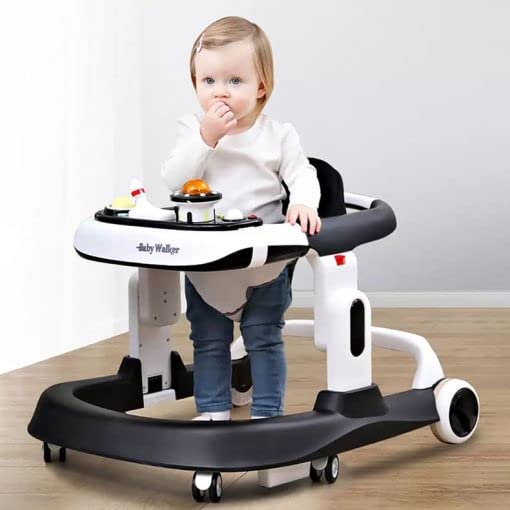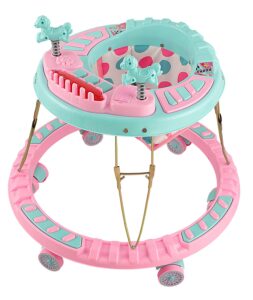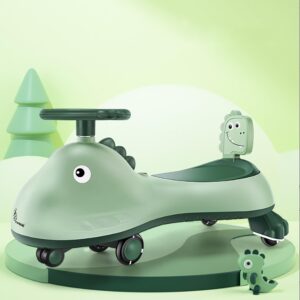Introduction
The history of baby walkers is a fascinating journey of innovation and adaptation, reflecting changing parenting needs and safety advancements. Baby walkers have long been a tool for supporting infants as they develop mobility and independence. From rudimentary wooden frames to modern AI-powered smart walkers, these devices have evolved significantly. In this article, we will explore the history of baby walkers, their evolution over the centuries, the latest trends in 2025, and their overall impact on child development.
The History of Baby Walkers
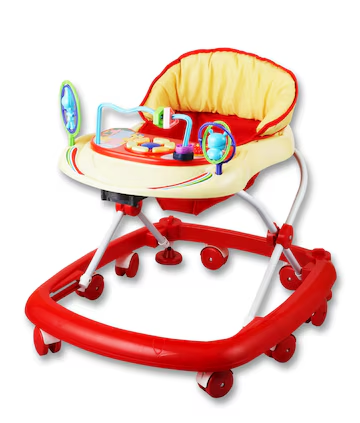
Early Beginnings: The 15th to 19th Century
The history of baby walkers dates back to the 15th century when primitive wooden frames were used to help toddlers maintain balance while learning to walk. These early baby walkers consisted of circular wooden rings mounted on wheels, providing support and preventing falls.
During the 17th and 18th centuries, baby walkers became a common sight in noble households and were depicted in paintings and manuscripts. Often crafted from wood, these walkers kept babies within a defined area while allowing them to practice walking in a controlled manner.
The Industrial Revolution: The 19th to Early 20th Century
With the rise of the Industrial Revolution, baby product designs improved significantly. The history of baby walkers during this period saw a shift from handcrafted wooden designs to mass-produced metal and wooden models that were more durable and accessible to the growing middle class.
The 19th century also saw the introduction of patents for baby walkers, some featuring innovations like anti-tip mechanisms and improved mobility functions. These enhancements made baby walkers safer and more practical for everyday use.
The Mid-20th Century: Mass Production and Commercialization
The history of baby walkers took a significant leap in the 1950s and 1960s with the advent of mass production. Manufacturers began creating lightweight plastic models that were easy to maneuver. This era also introduced interactive features such as attached toys and musical elements, transforming baby walkers from mere walking aids into engaging activity centers.
Late 20th Century: Safety Concerns and Regulations
By the 1980s and 1990s, concerns about the safety of baby walkers grew as studies revealed a rise in accidents caused by improper usage. Issues such as falls, stair-related injuries, and mobility risks led to regulatory interventions. Countries like the United States and Canada implemented stringent safety guidelines, requiring manufacturers to enhance product stability, introduce braking mechanisms, and reduce potential hazards.
Modern Trends in Baby Walkers in 2025
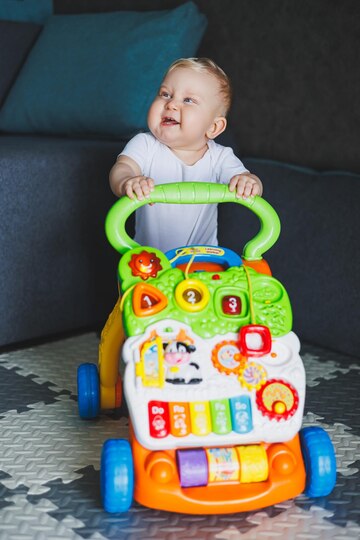
1. AI-Powered Smart Baby Walkers
The latest trend in the history of baby walkers includes AI-integrated smart walkers that track a baby’s movement and automatically adjust speed. Some models even feature obstacle detection sensors and fall-prevention technology, significantly improving safety.check out Top 10 Best Baby Walkers in 2025
2. Eco-Friendly and Sustainable Designs
With an increased focus on sustainability, manufacturers are now producing baby walkers made from eco-friendly materials like bamboo and recycled plastics. These models are not only safe for infants but also contribute to environmental conservation.
3. Multi-Functional Baby Walkers
Modern baby walkers are more than just mobility aids. They now feature interactive activity panels, sensory stimulation elements, and convertible modes that allow them to function as stationary play centers, making them highly versatile.
4. Adjustable and Foldable Walkers
Parents in 2025 prefer adjustable baby walkers that can grow with their child. Foldable designs also make storage and portability easier, catering to families with limited living space.
5. Enhanced Safety Features
Due to past safety concerns, the newest baby walkers come equipped with features like anti-slip wheels, height adjustments, and auto-stop mechanisms to prevent accidents. Many brands now focus on meeting or exceeding global safety standards to ensure infant protection.

Conclusion
The history of baby walkers showcases a remarkable transformation from simple wooden frames to advanced AI-powered models. While these devices have always aimed to support infant mobility, modern safety enhancements have made them more reliable and beneficial. Parents looking to purchase a baby walker should prioritize models with the latest safety features, ensuring their child’s development and protection.
FAQs (History of Baby Walkers)
1.When were baby walkers first invented?
The history of baby walkers dates back to the 15th century when wooden frames were designed to help infants stay upright while learning to walk.
2.Are baby walkers safe in 2025?
Yes, modern baby walkers have improved safety features, including auto-stop mechanisms, anti-slip wheels, and AI-powered obstacle detection.
3.What are the benefits of using a baby walker?
Baby walkers help strengthen leg muscles, encourage mobility, and provide entertainment. However, they should always be used under supervision.
4.What are the latest trends in baby walkers in 2025?
The newest trends include AI-powered walkers, eco-friendly materials, adjustable height options, and multifunctional play features.
5.How do I choose the best baby walker for my child?
Consider factors such as safety features, adjustable height, stability, and interactive play elements when selecting the best baby walker.

